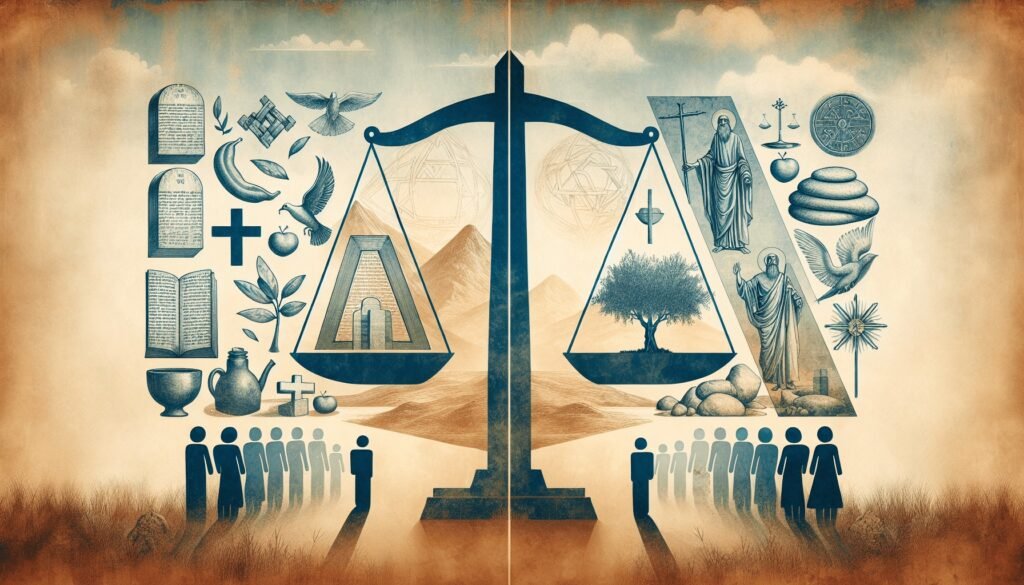What do you think of when you hear the term “purification rites”? Perhaps images of elaborate rituals or meticulous preparations come to mind. Now, envision this in the context of the Ark of the Covenant—a sacred symbol in ancient Israelite culture, representing divine presence and guidance. Today, let’s unpack the fascinating subject of purification rites, particularly the strict washings mandated before moving this significant artifact.

The Sacred Significance of the Ark of the Covenant
The Ark of the Covenant isn’t just an ornate chest; it’s laden with layers of meaning that span history, theology, and cultural identity. You might picture it as a physical vessel, but it represents much more—a tangible connection between the divine and the people. As per the Book of Exodus, it housed the tablets containing the Ten Commandments, which could be viewed as a divine guidebook for morality and law.
- Divine Presence: The Ark was believed to be the dwelling place of God among His people.
- Covenant Symbol: It served as a reminder of the covenant between God and the Israelites, a sacred agreement laden with expectations and blessings.
- Cultural Identity: For the Israelites, moving the Ark was not just a logistical operation; it was a spiritual undertaking that tied them to their identity and collective memory.
Before the Ark could be moved, meticulous purifications were required to maintain its sanctity and ensure God’s favor.
Old Testament Foundations of Purification
In the ancient texts, purification is emphasized significantly. As you wander through the pages of the Old Testament, you’ll find various laws and rituals aimed at achieving holiness—setting apart spaces, objects, and people for divine service.
The Laws of Cleanliness
For the ancient Israelites, cleanliness was not simply a matter of hygiene but a reflection of a much deeper spiritual reality.
- Levitical Laws: The book of Leviticus lays out stringent regulations for ensuring purity. These laws cover everything from dietary restrictions to bodily discharges, proving that cleanliness impacted one’s capacity to approach God.
- Spiritual Reflection: Cleanliness was perceived as a metaphor for moral and spiritual purity. Maintaining physical cleanliness was intrinsically tied to spiritual readiness.
Ritual Practices
Various rites involved washing and purification, serving as symbolic gestures reinforcing themes of dedication and sanctity. Picture, if you will:
- Washing Hands and Feet: The priests would wash themselves before approaching the Ark, proclaiming their inner intent to be worthy of God’s presence.
- Ceremonial Cleansing: Purification rituals could involve the use of water from specific sources, often considered sacred, as a means to not only cleanse but also sanctify.

The Process of Moving the Ark
Moving the Ark wasn’t merely a physical act; it required careful preparations that were rife with ritual. The very act of transporting the Ark was an endeavor that combined logistics, reverence, and adherence to strict religious laws.
The Priestly Role
The Levites were entrusted with the care and transport of the Ark. You can almost picture them assembling, clad in their sacred garments, ready to reinforce the Ark’s significance through their actions.
- Divine Selection: Only the Levites were allowed to carry the Ark. This exclusivity underscores the notion of being chosen for a divine purpose.
- Preparation Rituals: Prior to any movement, the priests engaged in various purification rituals, underscoring the sacredness of their task.
The Physical Transport
Details in the scriptural accounts reveal exactly how the Ark was to be moved, emphasizing the careful nature of its transport.
| Element | Description |
|---|---|
| Carrying Poles | The Ark was designed with rings for poles, allowing the Levites to carry it without touching it directly—demonstrating respect for its holiness. |
| Censers | Incense was burned during the transport as a means of worship and to mark the approach to the divine. |
| Accompaniment | Music and praises often accompanied the journey of the Ark, elevating the act to a communal spiritual experience. |
The Role of Water in Purification
Water held profound symbolic importance in ancient practices, functioning as a vital element in purification rites. You might recognize its significance in various cultures across history—the river as a life-giver, a renewer, a sanctifier.
The Waters of Life and Death
In the biblical tradition, water reflects themes of life, death, and rebirth. Consider the symbolism:
- Chaos vs. Order: The creation narrative reveals waters representing both chaos and divine order. Moving the Ark often meant confronting these primordial waters, echoing the larger cosmological themes.
- Baptismal Imagery: Just as baptism signifies purification in the Christian tradition, ancient Israelite practices involving washing served to remove impurities, allowing for a fresh start.
Practical Applications of Water in Rites
When moving the Ark, water was a critical component of the rituals employed.
| Ritual | Description |
|---|---|
| Laving Abdomen | The priests would wash their hands and feet as a symbolic act of cleansing their inner intentions. |
| Sprinkling | Water or blood from sacrifices were often sprinkled on people or items to signify their purification. |
Ritual Purity and Its Cultural Impact
Ritual purity extended beyond the immediate act of transportation; it permeated the socio-cultural fabric of ancient Israelite society. How did these rites shape communal identity and relationships?
Community Cohesion
Purification rites served a social function, promoting unity within the community. You can imagine gatherings where families would come together to observe and engage in these rituals.
- Shared Responsibilities: The collective participation in these acts reinforced a sense of belonging and shared devotion.
- Teaching Moment: Elders taught younger generations the importance of purity, ensuring that the values were passed down.
Cultural Memory
The rites surrounding the Ark contributed to a shared cultural memory that shaped identities. Think of how modern societies hold onto rituals and ceremonies that define collective experiences.
- Historical Narratives: Stories of the Ark’s movement and the associated rituals were recounted through generations, enhancing their historical significance.
- National Identity: The Ark symbolized God’s presence, making it central to Israelite identity through crises and challenges.
Archaeological Insights into Purification Practices
You might wonder how archeological findings support our understanding of these purification rites. Scholars have gathered evidence from excavation sites, inscriptions, and artifacts to shed light on ancient practices.
Discoveries in Ancient Sites
Recent archaeological excavations in Israel have unearthed items that provide insight into purification customs.
- Mikvahs: Ritual baths, or mikvahs, have been discovered that align with scriptural descriptions, showcasing the importance of ritual washing.
- Holy Sites: The excavation of ancient worship sites reveals altars and other artifacts used in purification and offering, echoing the biblical accounts.
Textual Discoveries
The Dead Sea Scrolls and other ancient manuscripts contain references to purification practices that align, adding credence to our understanding.
- Manuals of Purity: Some of these texts explicitly explain the rites and the significance of cleanliness before divine communion.
- Comparative Analysis: The study of other ancient Near Eastern cultures reveals parallels, providing a broader context for understanding Israelite practices.
Modern Perspectives on Ancient Purification Rites
You may wonder about the relevance of ancient purification rites today. What can we learn from these practices in our modern lives?
The Importance of Ritual
In a world increasingly defined by chaos, the structure that rituals provide can be grounding. Let’s consider:
- Mindfulness: Engaging in rituals—be they sacred or secular—can promote mindfulness and a deeper connection to one’s values.
- Collective Experience: Group rituals foster community, mirroring the ancient communal gatherings around the Ark.
Spiritual Significance
For many, the search for purity and divine connection remains as relevant as it was in biblical times.
- Personal Purification: Just as ancient rituals sought to purify and prepare individuals spiritually, modern counterparts often focus on self-reflection and moral alignment.
- Cleansing Practices: Contemporary practices that involve purifying—such as meditation or spiritual retreats—evoke desire for renewal and clarity.
Conclusion
As we’ve navigated the complex realm of purification rites surrounding the Ark of the Covenant, a vibrant tapestry of intertwining themes has emerged. You’ve seen how these ancient rites shaped individual and communal identities and maintained a connection with the divine.
Purification, though rooted in a specific historical and cultural context, resonates with timeless human themes: the desire for order amidst chaos, the longing for connection to something greater, and the journey towards moral and spiritual clarity. It’s these threads that weave through history and find relevance today.
Understanding purification rites not only brings us closer to ancient practices but also allows us to reflect on our own experiences of transformation and renewal. So, as you move through your day, ponder the rituals that ground you and consider how ancient traditions might continue to mold modern perspectives.


